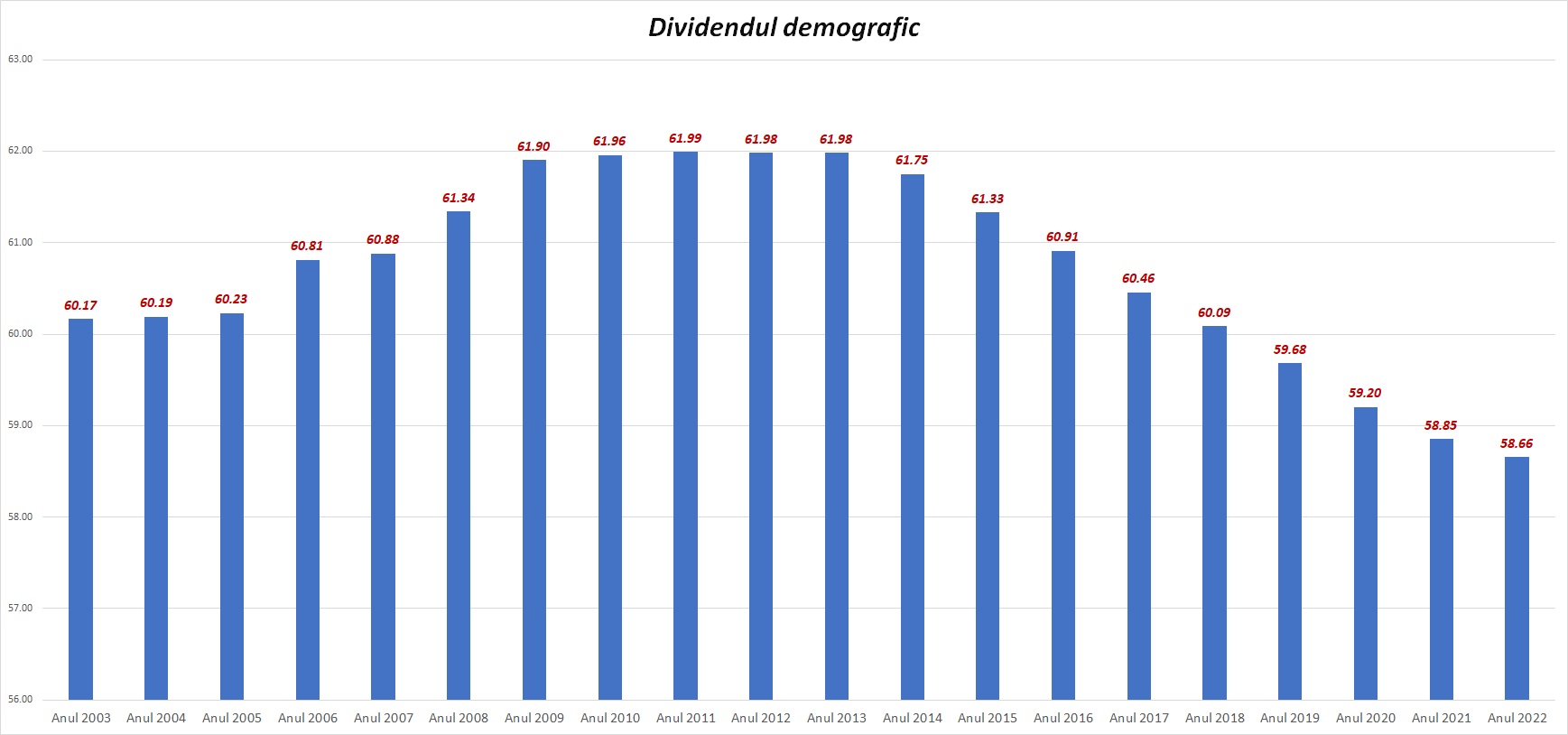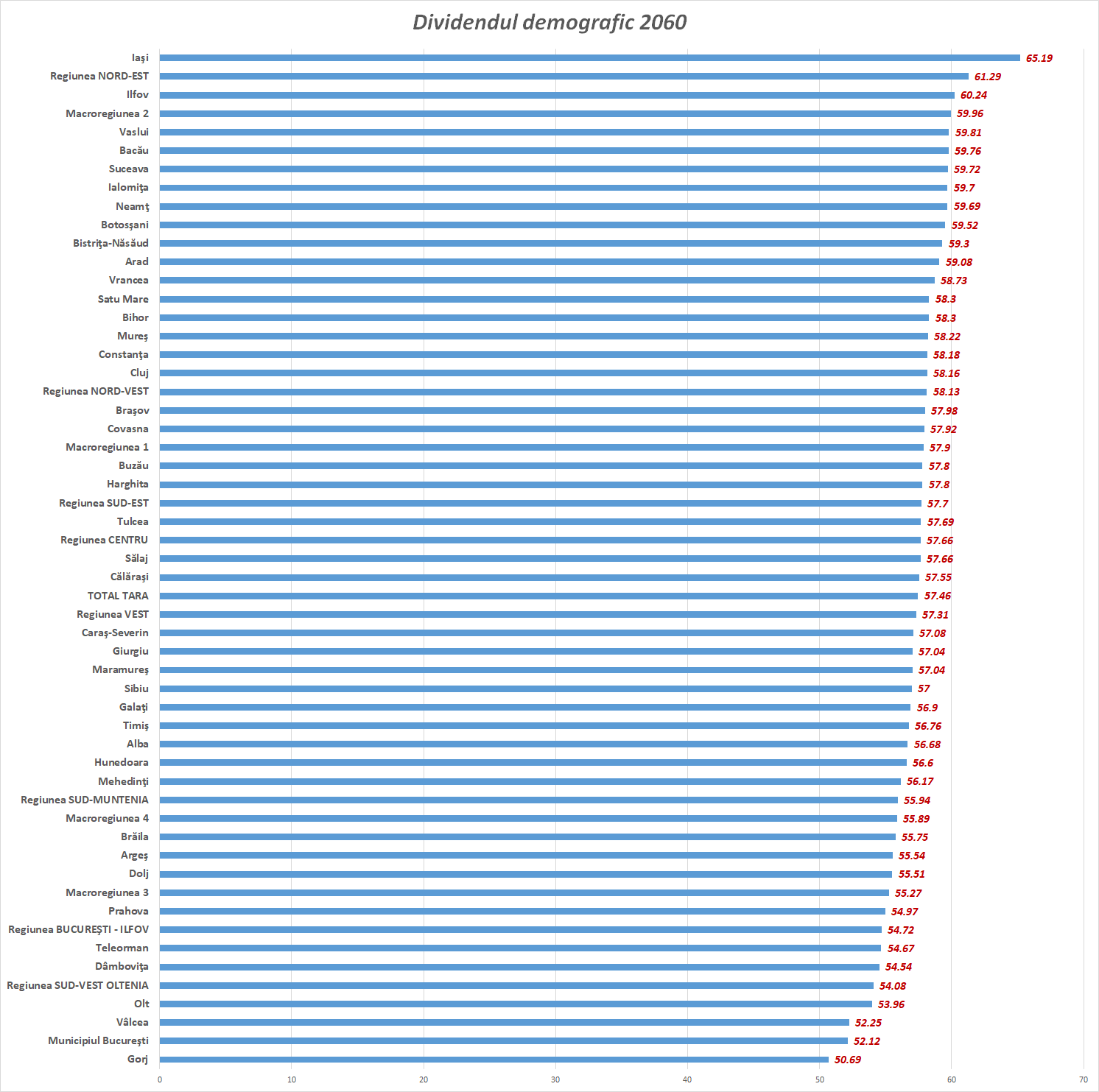
The demographic dividend in Romania is decreasing, and we will soon lose it, according to statistics obtained by HotNews.
The demographic dividend represents “the potential for economic growth as a result of a change in the age structure of the population.” It is established when the share of the population of working age in the total population is at least 55%.
How the data look like in Romania:

At a conference several years ago, the chief economist of the BNR, Valentin Lazeya attracted attention for 3 dividends, from which modern youth will not benefit
“Populism is generated by the discrepancy between the expectations of the young generation and the real opportunities that the economy, in the conditions of a historical, secular slowdown, can still give to this generation.
I will tell you one thing very clearly: we, the generation after 50, benefited from it three historical dividends from which the youth will no longer benefit. First demographic dividend: the generation of baby boomers in the USA, Ceausescu’s decrees. So the fact that more and more people entered the workforce will no longer be the case in 10-15 years. Dividend from disarmament. By the way, in 25 years we were able to stop spending money on weapons. There will be no more. Ecological dividend. We were able to pollute the planet with all kinds of planes and cars, two million cars in Bucharest.
The future will have to find other forms, because if not, this planet will go to hell, it will heat up until the ocean starts to catch fire. Even just for these three reasons – there are others – we need to talk about managing expectations. Because people become populists, extremists and nationalists when they have expectations that don’t match reality,” Lazea said.
The aging of society and the decline of the working-age population will be reflected in a slowdown in economic growth and an increase in public spending on social and medical services for the elderly.
The bad thing is that on the horizon of the next 25 years, things will look even worse. On the basis of estimates and forecasts, INS HotNews calculated the demographic dividend by district for the horizon of 2060.

Gorj, Bucharest, VâlceaOlt, Dâmbovița Teleorman and Prahova sbut districts where the working population will be less than 55% of the total population.
Demographic changes will change the social structure as there will be fewer and fewer adult children to care for aging parents. Thus, demographic changes cause many changes in the economy and society that affect the growth of the elderly population.
The window of opportunity to capitalize on the demographic dividend is not yet completely closed, but it is not far off. First, the share of the working-age population has already reached minimum values, amounting to 54% and has a tendency to decrease (due to the decrease in the birth rate and partly due to emigration).
Source: Hot News RO
Robert is an experienced journalist who has been covering the automobile industry for over a decade. He has a deep understanding of the latest technologies and trends in the industry and is known for his thorough and in-depth reporting.